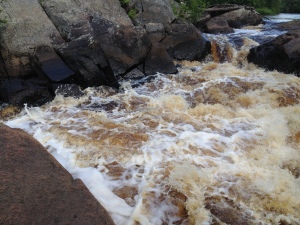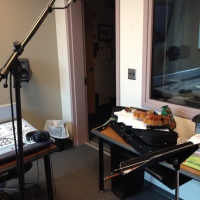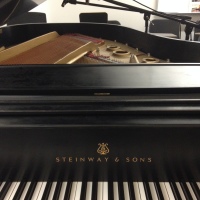
“the music in their strings” – Front Cover
“the music in their strings” – The Concept
This past summer, much of my time was consumed by one composition project: the music in their strings. The project is a type of “concept album,” or “tape piece,” and one that has been a sharp break from my usual writing process. In total, the piece spans 45 minutes and is 15 movements long. It uses violin, cello, piano, percussion, and electronics.
Conceptually, the piece draws heavy inspiration from Egon Schiele’s paintings and poetry. Active in Austria during the early 20th century, Schiele’s art is a grotesque extension of Gustav Klimt’s gaudy, quasi-Baroque paintings, but takes a more inward metaphysical perspective. Earthy colors and unstable architecture dominates many of his paintings, and drawing from his Austrian Expressionist roots, Schiele depicts the world through a raw, hyper-emotional lens.

“8. The Bridge”
After selecting the paintings that I would attempt to distill into music, I faced the challenge of codifying the visual into musical. How rigorously tied to the paintings should the music be? I decided to ask and answer a series of questions for each painting. What is the overall emotion? Are there areas of color that contrast with space? Did Schiele use virtuosic filigree or quick strokes? Is the painting more realistic or expressionist? These questions, at the least, offered a jumping-off-point for beginning the composition, and overall helped me gain a deeper understanding of Schiele as an artist.
Collaging and Electronic Sounds
The largest difference in the process of this project was the workflow: rather than notating every element of the music prior to recording and producing the track, I left many things open-ended. Form, in particular, was seldom concrete until the instruments were recorded.
I created some movements as a collage in ProTools, which resulted in harmonies that I would never intentionally write. These movements required more finesse, but I hope to use this technique again. The final movement was entirely collaged. Both the violinist (Natalie Dietterich) and cellist (Alex Chen) played the exact same music (mostly whole notes!) that later I cut up, copied, and edited together to form a complete movement. Check out the “before” and “after” score below.
- 15. – How it was recorded
- 15. – After collaging
Working with electronic sounds, as I have in the past with Fissure and Parallax, has been limited by what could be replicated in a live performance. Tempo changes had to be coordinated between the performer and electronics track, and a beat (out of practicality) had to be audible to the musician. For the music in their strings, I allowed myself to have moments that would be extremely difficult or impossible to render “live.” For example, “5. The Self-Seers” has 80 (yes, 80) sudden and immediate changes in tempo. To record this, I asked the violinist and cellist to play one or two beats at a time to a click-track at a fixed tempo. First, we recorded all of the music at q=100, then q=80, and so on. Later, I reassembled the music, creating a mosaic that fit perfectly together. Hear it below.
While I composed the piece, I even came across real-world examples of places in Schiele’s landscape paintings. “Mountain Torrent” and “The Old Mill” became real places for me, and I incorporated a few field-recordings into the music. The creaking mill can be heard in “6. the agony of thought,” and the rushing torrent can be heard in “9. amidst blue smoke.”
Listen Now!
Listen to the music in their strings below or visit this page to see the companion booklet that contains the art and poetry that pairs with the music. The score is also transcribed and available here, and certain movements can be performed live with the electronics. Contact me if you are interested!
Of course, thank you to Natalie Dietterich who played whatever I put in front of her, and Alex Chen, who came in to record the cello part. And thank you to the patient music school janitors who, on a warm and rainy August night, allowed me to record the piano long past midnight.






